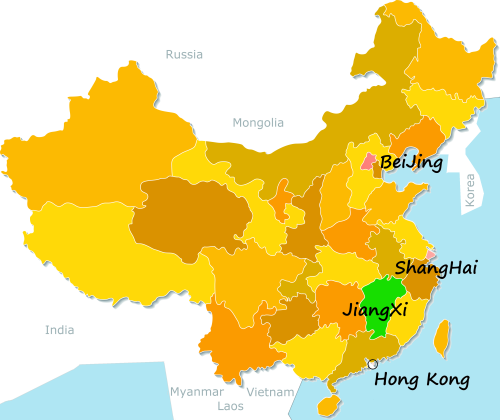
|
Hot pot dining is a communal and interactive meal enjoyed by many in China and beyond.
A hot pot meal consists of a simmering broth into which fresh ingredients are cooked, then dipped into a sauce before eating, bit by bit. Meats are thinly sliced and can cook in just 20 seconds (be sure to cook only one slice at a time). One can have tomatoes or cucumber as a side dish to eat raw.
Typically, the dipping sauce is sesame sprinkled with chopped spring onions though one add add various condiments such as chopped garlic.
Spicy (Hot) Broth (麻辣汤 - Má là tāng): This broth is typically made with a combination of chili peppers, Sichuan peppercorns, garlic, ginger, and various spices. It's known for its fiery and numbing flavor, characteristic of Sichuan cuisine. It adds a spicy kick to the ingredients cooked in the hot pot, offering a tingling sensation on the palate.
Non-Spicy (Not Hot) Broth (清汤 - Qīng tāng): This broth is a milder option compared to the spicy broth. It's often made with a clear or lightly flavored base, such as chicken, pork, or vegetable broth. It allows the natural flavors of the ingredients to shine through without the overpowering heat of spices. It's a popular choice for those who prefer a more subtle and refreshing taste.
Two-in-One (Yuan Yang) Broth (鸳鸯锅 - Yuān yāng guō): The two-in-one broth offers the best of both worlds by dividing the hot pot into two sections, allowing diners to enjoy both spicy and non-spicy options simultaneously. One side typically contains the spicy broth, while the other side contains the non-spicy broth. It caters to groups with varying preferences, providing a versatile dining experience where everyone can find something they enjoy.
Meat:
* Beef: Niú Ròu (牛肉)
* Lamb: Yáng Ròu (羊肉)
* Chicken: Jī Ròu (鸡肉)
Pork: Zhū Ròu (猪肉)
Sausages: Xiāng Cháng (香肠)
* Fish / Shrimp/Prawn Balls: Yú Qiú / Xiā Qiú (鱼球 / 虾球)
Seafood:
- Shrimp: Xiā (虾)
- Fish: Yú (鱼)
- Shellfish: Háimǔ (海蜇)
- Mussels: Gēn Mǔli (蚌肉)
- Squid: Yóu Yú (鱿鱼)
Vegetables:
* Coriander: Xīng Cài (香菜)
Potato slices: TǔDòu (土豆)
Tomatoes: Fān Qié (番茄)
Cucumber: HuángGuā (黄瓜)
Bean Sprouts: Dà Suàn (大蒜)
Lotus Root: Lián'ǒu (莲藕)
Bamboo Shoots: Zhú Sǔn (竹笋)
Cabbage: Xīng Cài (白菜)
Spinach: Bō Cài (菠菜)
Mushrooms:
- * Enoki Mushroom (long thin white): Jīn Zhēngū (金针菇)
- * Shiitake Mushroom: Xiāng Gū (香菇)
- Oyster Mushroom: Mù Ěr (木耳)
- Wood Ear Mushroom: Xīng'ěr (杏鲍菇)
- King Oyster Mushroom: Xìng Bàogū (杏鲍菇)
Tofu:
* Iced Tofu: Dòng Dòufu (冻豆腐)
* Tofu Skin: Dòu Pí (豆皮)
Firm Tofu: Làn Dòufu (蓝豆腐)
Silken Tofu: Dòufu Rǔ (豆腐乳)
Bean Curd Sheets: Dòu Piàn (豆片)
Noodles:
* Clear (bean) Noodles: Tāng Fěn (汤粉)
Rice Noodles: Mǐ Fěn (米粉)
Udon Noodles: Wǔdūn Miàn (乌冬面)
Other Ingredients:
* Dumplings: JiǎoZi (饺子)
Eggs: Jī Dàn (鸡蛋)
Fried Dough Sticks: Yóu Tiáo (油条)
Sauce Bowl:
* Sesame Sauce: Zhī Málà Jiàng (芝麻麻辣酱)
Peanut Sauce: Huā Shēng Jiàng (花生酱)
Condiments one can add to sauce bowl:
* Scallions (chopped spring onions): Cōng Jiàng Yóu (葱酱油)
Soy Sauce: Jiàng Yóu (酱油)
Vinegar: Cù (醋)
Chili Sauce: Làjiāo Jiàng (辣椒酱)
Garlic Sauce: Sào Jiàng (臊酱)
Sesame Oil: Zhī Yóu (芝麻油)
Well known hot pot chains include XiaoBu XiaoBu and HaiDiLao but one can also enjoy many one-off independent restaurants.
|

 Pottery making in JingDeZhen
Pottery making in JingDeZhen





